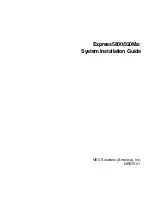
All About Graphics
WINNER 2000/Office
36
information (see DDC1) as well as the more comprehensive VDIF information (VESA Dis-
play Identification File).
DDC2AB
With DDC2AB additionally to DDC2B the computer may send commands for controlling
the monitor, e.g. for adjusting the screen position or the brightness (similar to ACCESS
bus).
Video Signal Formats
There are two common standards for the transmission of video signals: Composite video
and S video. The IEEE 1394 format is currently supported only by Sony equipment.
The monitor and graphics board communicate on three color channels. The color infor-
mation is split into three color signals for red, green and blue (RGB). Video information
for a television, on the other hand, only makes a distinction between monochrome and
color information (luminance and chrominance).
Composite Video
Composite video––also known as FBAS––packs the luminance and chrominance infor-
mation in a single signal. In this way, all the information required for a video image can
be transmitted over a single cable. This method is a great benefit for transmissions from
a television transmitter. But this method also has clear disadvantages regarding signal
quality: The nesting of luminescence (Y) and chrominance (C) is imprecise and leads to
errors in the video image.
S-VHS
The solution to the disadvantages of composite video format is clear. S-VHS or Y/C
offers the answer: the separation of the Y and C signals. The cost of having the second
cable necessary to implement this is more than compensated for by the enhanced image
quality. Video cameras that use the Hi-8 or SVHS-C method separate the Y and the C
signals wile recording. When transferring the signal to a television or a video recorder,
you should use the Hosiden connector or an S-VHS-compatible Scart cable, if possible.
IEEE 1394
This format––also known as FireWire––is a special case. It is the best solution in terms
of quality, as it is a digital process. This development was a joint Apple and Sony initia-
tive for transmitting digital video information. The video data are transmitted directly as
they are produced, line by line. The throughput for IEEE 1394 is currently 100 Mbps.
Transfer rates of 200 and 400 Mbps are already in sight.
Содержание WINNER 2000/Office
Страница 1: ...ELSA WINNER 2000 Office TM User Manual...
Страница 8: ...WINNER 2000 Office X...
Страница 22: ...After Installing the Drivers WINNER 2000 Office 14...
Страница 32: ...Video What s In What s Out WINNER 2000 Office 22...
Страница 36: ...Useful Stuff and More WINNER 2000 Office 26...
Страница 58: ...Appendix WINNER 2000 Office 48...
















































